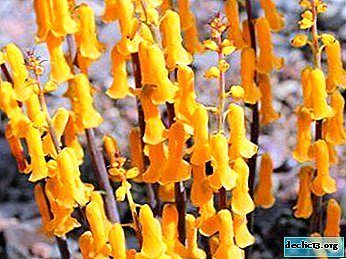We talk about orchid diseases and their treatment
 Orchid is truly one of the most beautiful and amazing flowers. Such a miracle appeared a very long time ago, but it gained its popularity only a few thousand years ago. There are many types of orchids, but only a few are able to adapt to room life. Thanks to the work of specialists and scientists, it was possible to obtain varieties of orchids that are adapted to a variety of conditions.
Orchid is truly one of the most beautiful and amazing flowers. Such a miracle appeared a very long time ago, but it gained its popularity only a few thousand years ago. There are many types of orchids, but only a few are able to adapt to room life. Thanks to the work of specialists and scientists, it was possible to obtain varieties of orchids that are adapted to a variety of conditions.
Orchids themselves are quite capricious flowers that are susceptible to a variety of diseases. In addition to the fact that you need to properly care for a houseplant, it is worth familiarizing yourself with all existing flower diseases and studying treatment methods. Most often, parts of the plant suffer from diseases. Roots, leaves or flowers may die, and if nothing is done, the orchid will stop growing completely.
Often there are times when a plant is not only exposed to a disease, but also turns out to be a habitat for pests. It is sometimes difficult to distinguish a disease from such parasites, but it is worth noting that the disease progresses much more slowly than the activity of pests. It is worthwhile to engage in treatment as soon as possible in order to prevent the death of the plant. What these beautiful plants are sick with, how to treat them, and what to do to prevent troubles.
The main diseases of indoor plants: description and photo
Almost all indoor plants sooner or later may undergo some kind of ailment. Orchids in this matter are no exception. All diseases that affect plants can be divided into:
- fungal;
- bacterial;
- viral.
Each disease can affect the whole flower, as well as its individual parts. All problems appear in the form of spots, rot, lethargy and yellowing. Treatment will be prescribed only after an accurate determination of the causative agent of a particular disease.
You can find out about orchid diseases, what are the ways to treat them, and also see photos of the affected leaves here.
Fungal
 Fungal diseases can occur if the plant is slightly frozen, overcooling, or, conversely, has been exposed to the sun for a long time. Problems can also arise after abundant watering of the plant, so the roots begin to rot, forming fungal cells. The most dangerous for orchids is a long time near heating appliances.
Fungal diseases can occur if the plant is slightly frozen, overcooling, or, conversely, has been exposed to the sun for a long time. Problems can also arise after abundant watering of the plant, so the roots begin to rot, forming fungal cells. The most dangerous for orchids is a long time near heating appliances.
Temperature can be detrimental to the plant, causing damage to flowers, leaves, and buds. The fungus can occur when the plant is hypothermic, but this happens more rarely. Only when the orchid is in the cold for more than ten hours can fungal cells form.
Read more about how to save an orchid from mold on the roots, leaves and other parts of the plant, read in our material.
Bacterial
Bacterial diseases can occur in weakened and damaged orchids. All bacteria that penetrate the plant tissue cause negative processes that destroy everything in its path. Rot affecting the roots quickly passes to the rest of the plant, and also switches to healthy flowers. If you do not take measures to treat the orchid, then it can die within a few days.
Bacteria most often affect primarily the leaves of the plant, and then go to the roots. The disease is spreading rapidly, but it is worth noting that there are still no special drugs for treatment.
Reference. Experts recommend the use of synthetic antibiotics, which will prevent the further spread of the disease.The symptoms of bacterial and fungal diseases are the same, therefore it is better to consult with specialists to understand which direction to move in order to cure the plant.
Viral
Viral diseases cannot be determined on their own at home. Orchids are sent for special laboratory tests to understand the specifics of the disease. Symptoms of orchid diseases can manifest themselves in the form of different spots, therefore, it is practically impossible to understand that the cause is in the virus.
There are diseases of a viral nature that do not appear for several years. The plant looks normal, but in fact it gradually rots from the inside.
There are viral diseases that infect a plant and kill it in a matter of days. Such infections cannot be cured, so the plant is doomed to death. Most often, it is damaged plants or weakened ones that are infected.
If the orchid is still under the control of the virus, then it can be saved only if the development and maintenance conditions are completely changed. Treatment should begin after elimination of adverse maintenance factors.
How to deal with color problems at home
Plants are often exposed to some problems that lead to the development of diseases. Such negative factors must be prevented as soon as possible, but if signs of disease have already appeared, then you should know how to deal with them.
 Drought. If the orchid is exposed to drought, then it should be watered as often as possible, because the roots do not get enough moisture. It is because of this that individual root systems can die out, disrupting the vital activity of the whole plant.
Drought. If the orchid is exposed to drought, then it should be watered as often as possible, because the roots do not get enough moisture. It is because of this that individual root systems can die out, disrupting the vital activity of the whole plant.- Lethargy. When buying a plant, you must first pay attention to the roots. If they are brown and lethargic, then such a plant is already sick, it is not recommended to buy it. Greenish and dense roots indicate that the orchid is healthy and strong. If a person has noticed problems with the roots, then he should carefully cut off the damaged parts of the root and treat the plant with antibacterial solutions. After that, you can safely plant an orchid in a pot, falling asleep with densely fertilized soil.
- Decay. In the presence of such a disease, the roots and leaves begin to rot little by little. They acquire a brown tint and become lethargic. Such a disease can cause high air temperature, as well as humidity. In order to get rid of this problem, it is necessary to treat the plant with solutions with the addition of benlat and topsin. To achieve the best effect, you must completely immerse the orchid in such a solution, repeating the procedure after two weeks.
- Yellowing. If the leaves begin to acquire a not quite healthy color, then this indicates the presence of certain problems.Important! Treatment should be started immediately so that the plant does not die. Attention should be paid not only to the leaves, but also to the root system, because the ka kon is also in danger.
Removing the missing leaf will not help save the plant, because the infection spreads lightning fast. It is necessary to dry the plant, treat it with an antifungal solution and plant it in new soil.
- Stickiness of the sheet. This problem appears in the case. when the plant is not cared for properly. Orchids love lighted places, but if they are placed in the shade, problems like stickiness of leaves may appear. It should be well ventilated with orchids, as well as monitor the intensity of watering. The leaves should be wiped with an antibacterial solution several times a month.
- Anthracnose. The disease can occur on leaflets with pronounced brown spots. After a while, they increase in size and blacken. The cause of this disease is most often high humidity. Affected areas should be carefully removed and the sections treated with ash.
- Powdery Mildew This fungal disease can occur on leaflets and buds. At first, a white coating appears, after which the plant begins to dry out. The disease develops due to the indoor greenhouse effect. Temperature and humidity are too high. The plant must be well watered and then treated with colloidal sulfur.
- Rust. Such a fungal disease is quite rare, but it is still worth knowing how to deal with it. Orchid leaves are affected, on which white spots appear, eventually turn brown. After a few days, the formation of fungal plaque can be observed. The affected leaf is completely cut off. If the disease was noticed at the initial stage, then the orchid can be treated with Mikosan.
 Black mushrooms. Such a disease manifests itself only as a result of the activity of pests. They leave their marks on the leaves, after which fungal deposits develop. These spots prevent the orchid from receiving the necessary amount of sunlight, so it can die. In order to get rid of mushrooms, you need to treat the plant with Mikosan or Ridomil.
Black mushrooms. Such a disease manifests itself only as a result of the activity of pests. They leave their marks on the leaves, after which fungal deposits develop. These spots prevent the orchid from receiving the necessary amount of sunlight, so it can die. In order to get rid of mushrooms, you need to treat the plant with Mikosan or Ridomil.- Spotting. This dangerous disease affects leaves that turn yellow, soften and release a viscous liquid. All affected areas must be removed, and the sections treated with iodine. If spots after trimming did not appear, then the plant is considered healthy. Otherwise, more serious drugs should be used.
Care Rules
All diseases from which orchids suffer are much easier to prevent than to cure.
If a person wants his favorite indoor plant to be healthy and beautiful, then he You should adhere to certain rules for the care of orchids:
- A strong flower is not exposed to various external stimuli.
- Flowers that were just bought should be quarantined for one month.
- The plant should stand separately from the rest, so that during this time you can observe it.
If the plant has at least some signs of illness, then it is not placed with the rest, but therapeutic measures are started. During treatment, the plant is placed in a drier place and stop fertilizing. Once the orchid is healthy, it can be planted with other indoor plants.
If the plant as a result of the disease has completely lost its roots, then you should try to breed the orchid buds (how to resuscitate an orchid without roots at home can be found here). This method is certainly not the most effective, but it can turn out to return the plant. In the case when the orchid has lost roots and leaves, you should take more care of the remaining parts. If the plant is left without leaves, then you should pay attention to the roots (about what to do if all the leaves have fallen off from the orchid, read here, and from this article you will learn how to grow orchid roots using root and other means) . Due to the fact that they are healthy, the plant will continue to grow.
Orchids can remain healthy only if a person will carry out a variety of prophylaxis and monitor the condition of the plant. It is necessary to ventilate the room as often as possible, because orchids love fresh air more. Regarding the humidity level, this should be monitored constantly. If the air is too dry, then the plant must be watered.
It is not necessary to transplant orchids so often, because they are attached to their place, and the period of adaptation takes a lot of energy. Of course, a variety of diseases and pests are unpleasant factors, but they are quite fixable.
Any orchid disease can be cured, but the main thing is to notice the symptoms in time. The plant will continue to give joy and comfort in the house. If you do not forget to do everything right and with love, then you can cure any indoor flower from ailments, even the most serious ones.
Useful video
All about orchid diseases and how to treat them:

 Drought. If the orchid is exposed to drought, then it should be watered as often as possible, because the roots do not get enough moisture. It is because of this that individual root systems can die out, disrupting the vital activity of the whole plant.
Drought. If the orchid is exposed to drought, then it should be watered as often as possible, because the roots do not get enough moisture. It is because of this that individual root systems can die out, disrupting the vital activity of the whole plant. Black mushrooms. Such a disease manifests itself only as a result of the activity of pests. They leave their marks on the leaves, after which fungal deposits develop. These spots prevent the orchid from receiving the necessary amount of sunlight, so it can die. In order to get rid of mushrooms, you need to treat the plant with Mikosan or Ridomil.
Black mushrooms. Such a disease manifests itself only as a result of the activity of pests. They leave their marks on the leaves, after which fungal deposits develop. These spots prevent the orchid from receiving the necessary amount of sunlight, so it can die. In order to get rid of mushrooms, you need to treat the plant with Mikosan or Ridomil.















